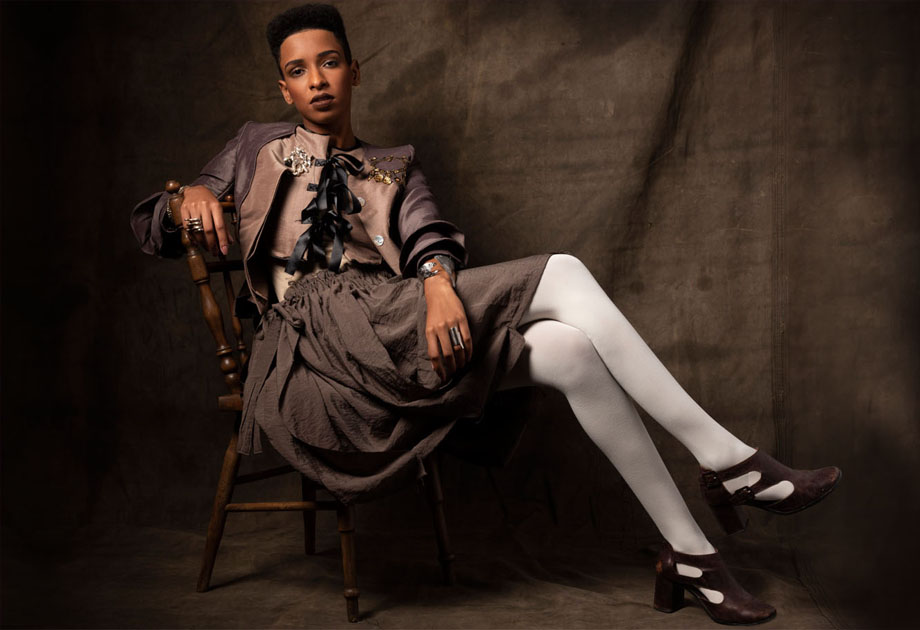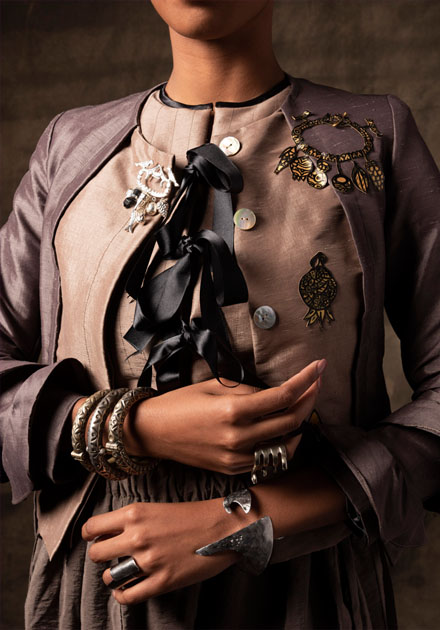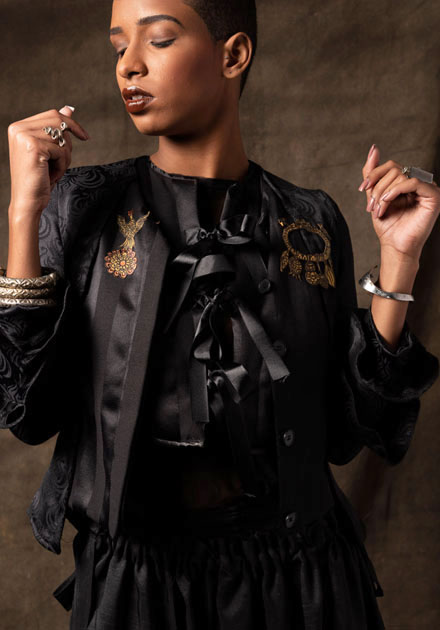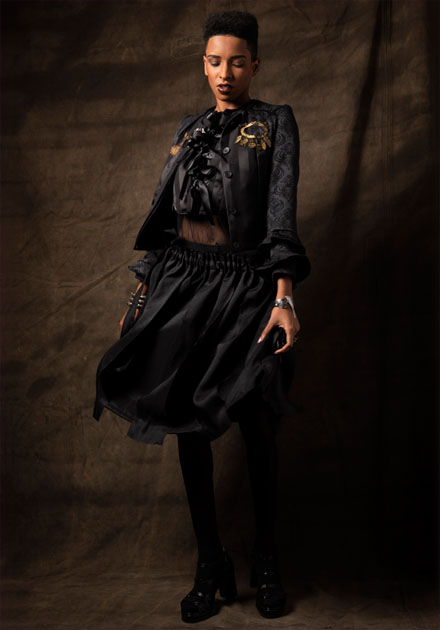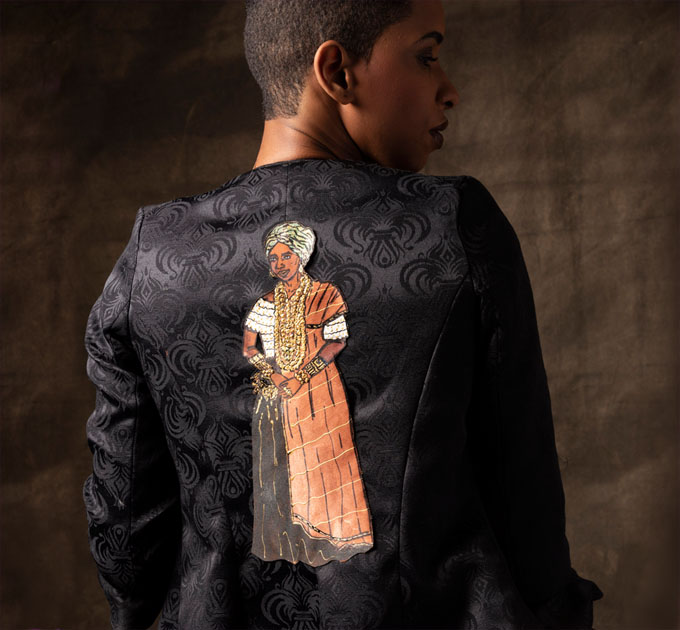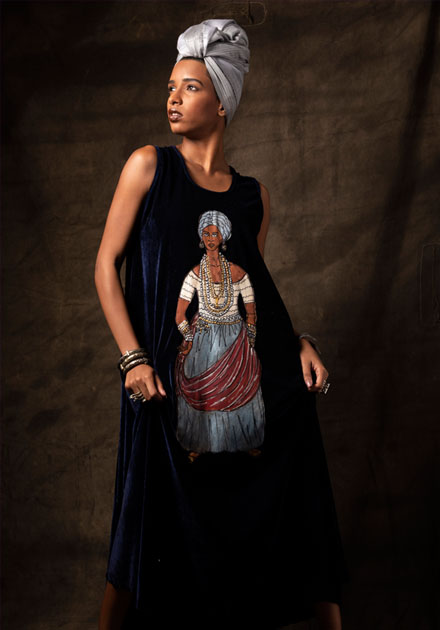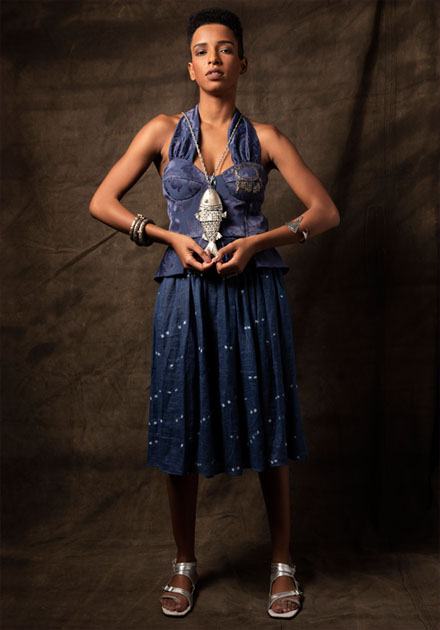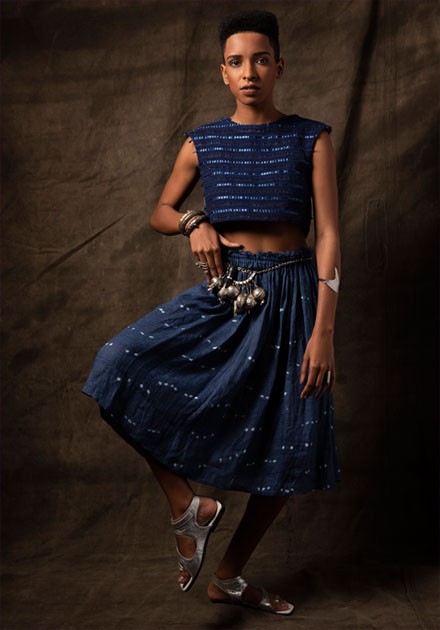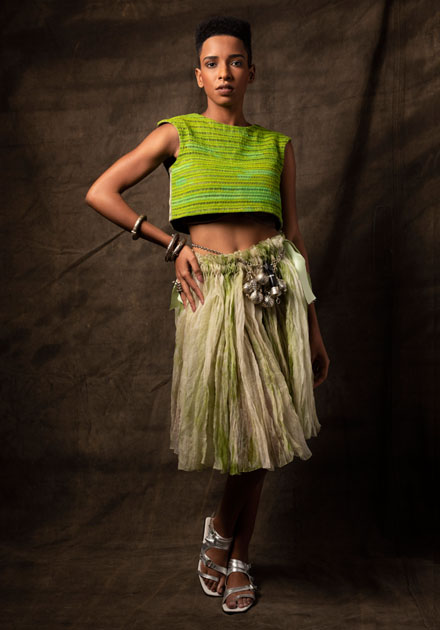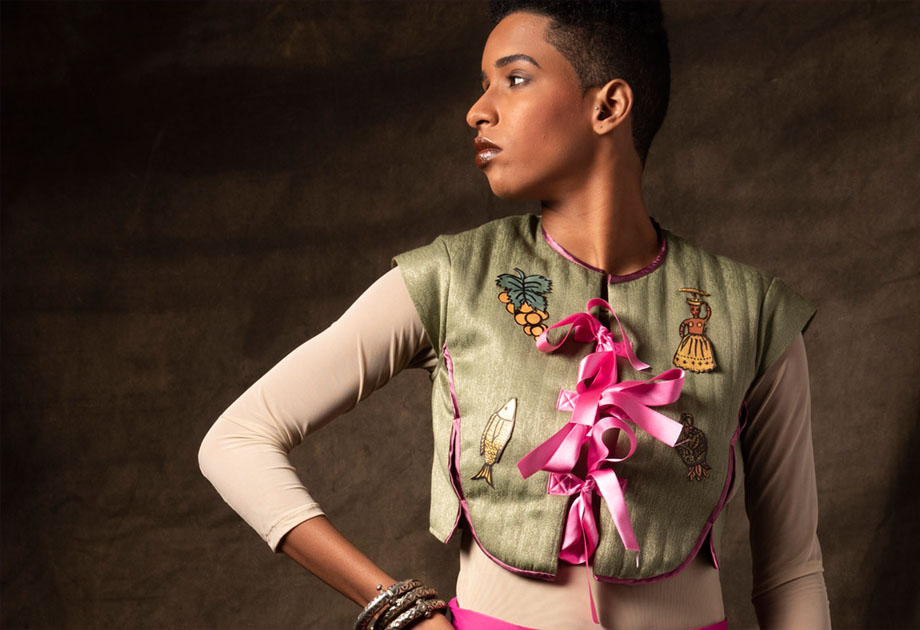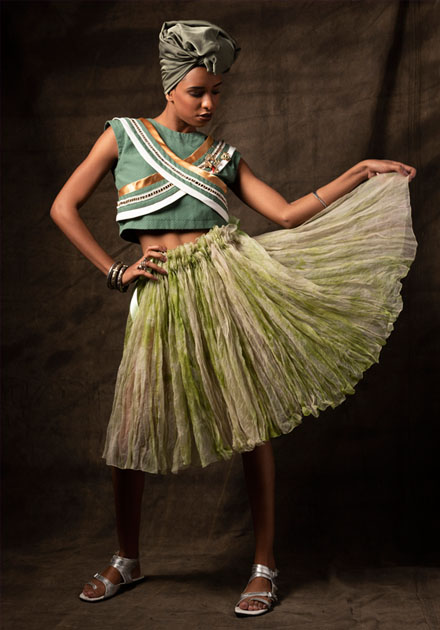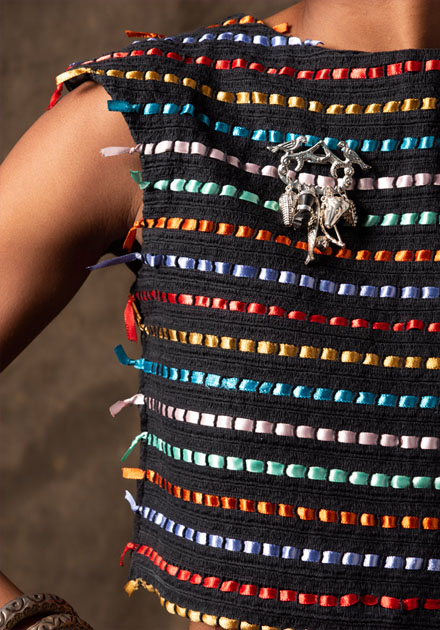Creole Collection
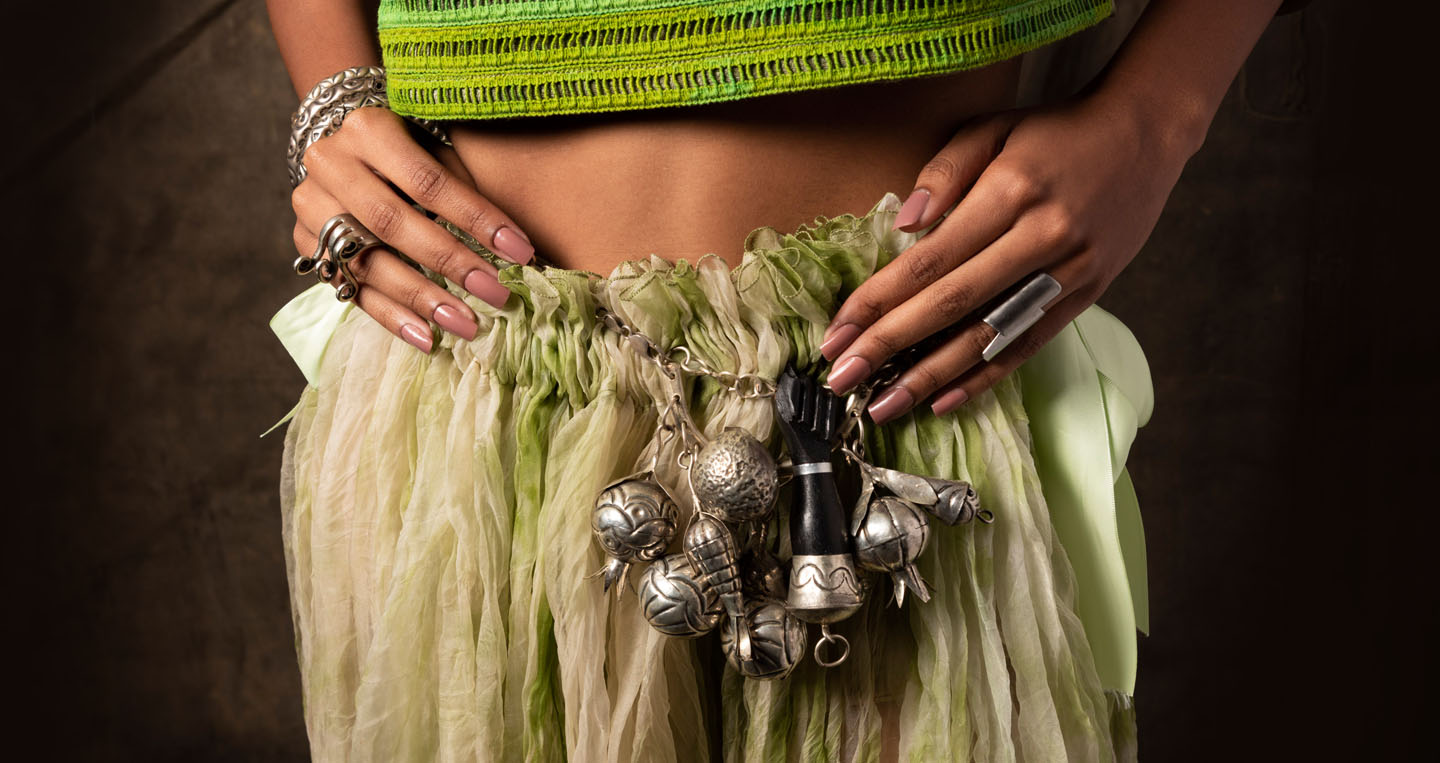
Clothing and body decoration denote the need to communicate our individual and collective characteristics, the search for beauty and for visual distinctiveness.
In Brazilian colonial society, fashion was an instrument of social differentiation. Afro-Brazilians, enslaved or freed, were subject to rigid clothing rules, such as the prohibition of using silk, linen and jewellery, with the intention of limiting luxury to white people and visually segregating society. (source: Cunha, L. Milz, T.) Baiana (women from Bahia) clothing and creole jewellery were instruments of cultural identification and of cultural heritage retrieval, as well as social affirmation.
The pieces from this new collection showcase hand-painted representations of the ornaments used by Afro-Brazilian women from the colonial period. The penca de balagandãs (similar to a French chatelaine), consists of a belt or big brooch with a chain, from where specific symbolic objects are hung, such as fruits (grapes, pomegranate, cashew), fish and other items. These objects refer to the Orixás (Afro-Brazilian deities) and their characteristics, and are endowed with a strong sense of protection of fertility and also against evil and peril.
Credits: photos – Rodrigo Lopes | production: Isabela Lira | model: Nathallya Alves | make up: Debora Queirós


